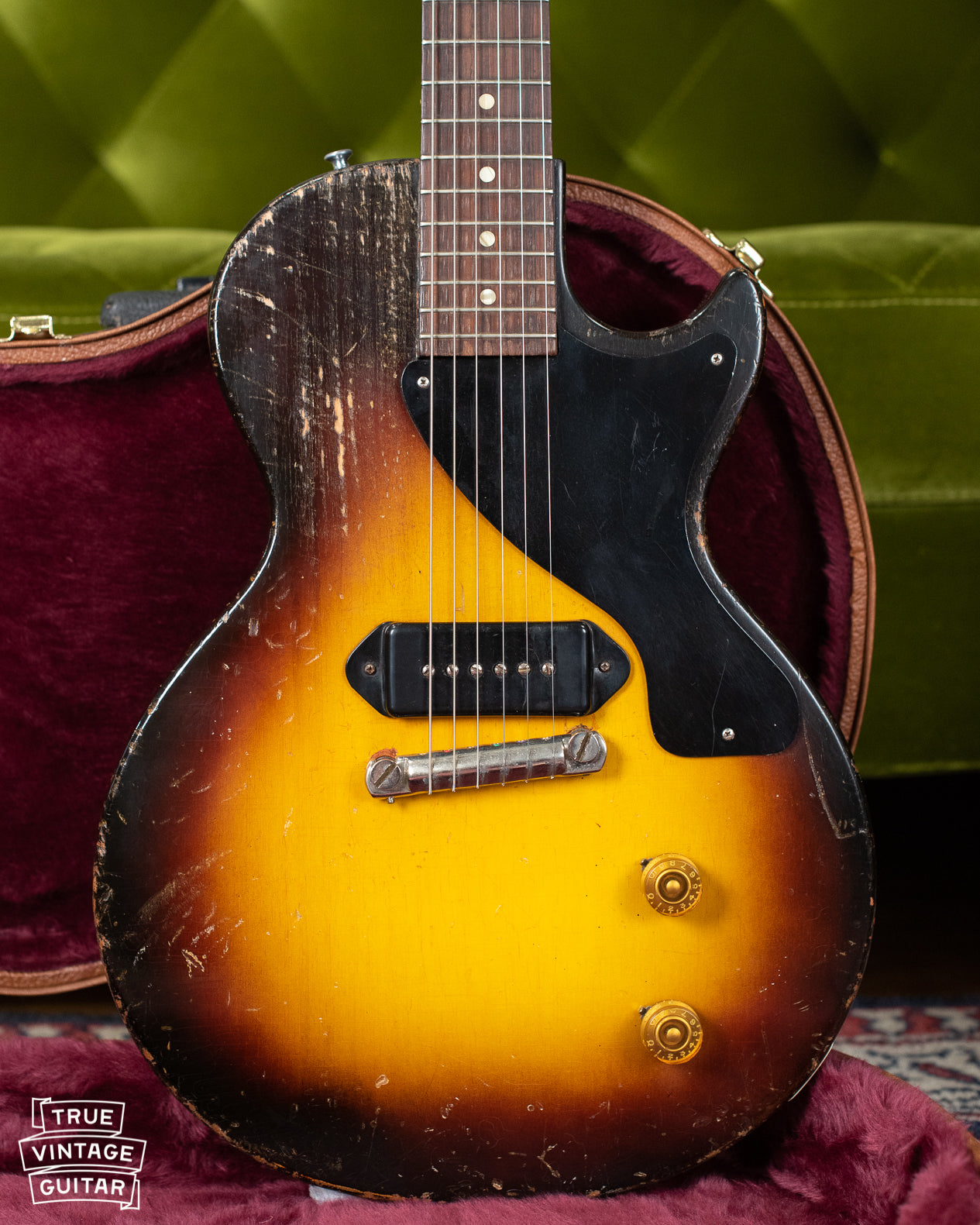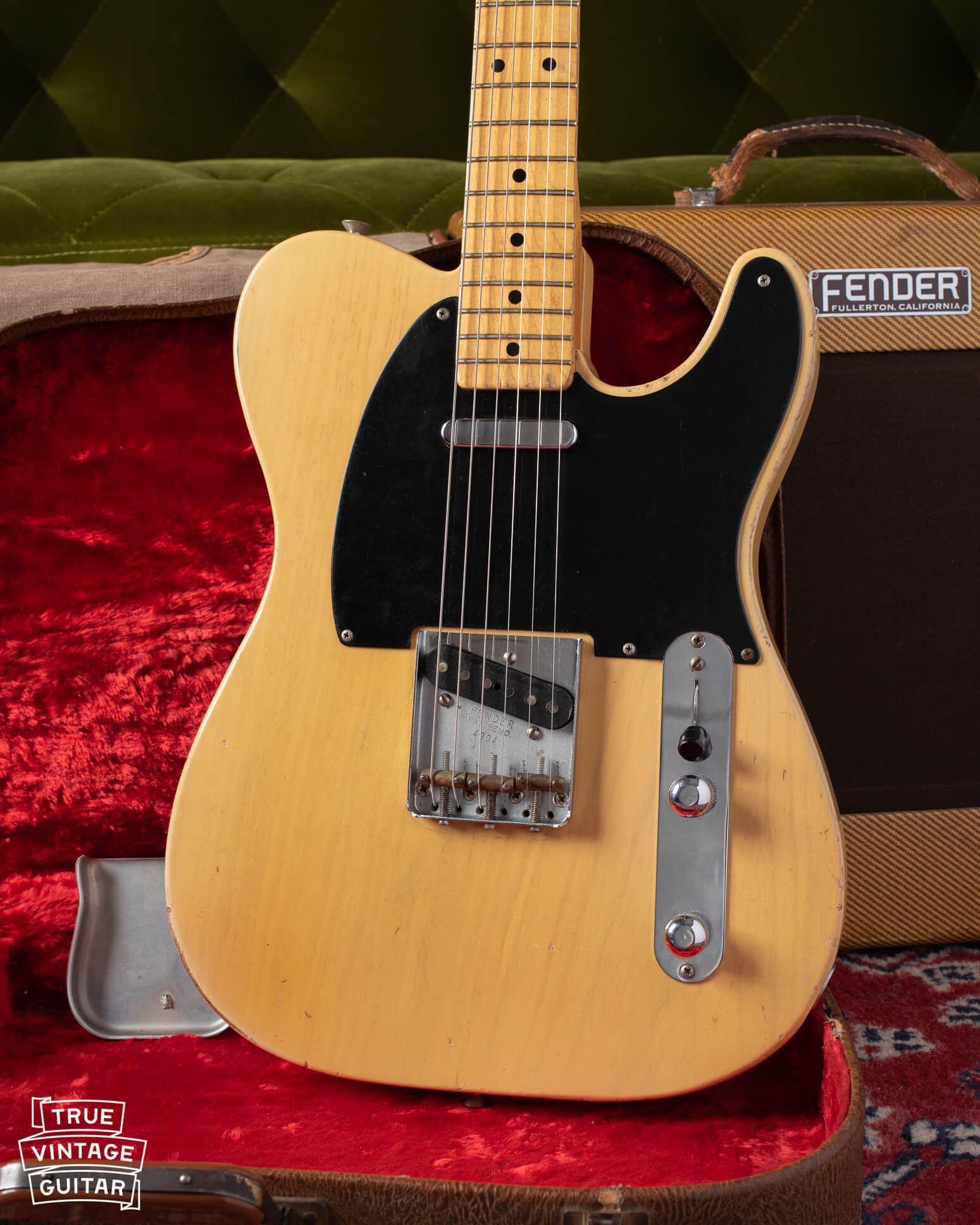Welcome to the True Vintage Guitar Blog. My goal with this blog is to create content about the interesting guitars, instruments and other things that I find. I am not a dealer or really even a collector, just a guy that likes old stuff.
My first post is dedicated to a 1964 Fender Duo-Sonic. I was drawn to this instrument because of the funky styling, interesting transition features and eventually the unique tone that all the pickup combinations can produce. But first, a few pictures.
My first post is dedicated to a 1964 Fender Duo-Sonic. I was drawn to this instrument because of the funky styling, interesting transition features and eventually the unique tone that all the pickup combinations can produce. But first, a few pictures.
I know what you are thinking, "Hey, that is a Duo-Sonic II!" You would be correct, sort of. This instrument would be considered just barely in the transitional period between the two models. It has all the features of the Duo-Sonic II such as the 24" scale length, thick tortoise shell guard and the metal plate under the jack and knobs. The only thing making it a Duo-Sonic is the name on the headstock:
Either way, it is a heck of a little blues guitar but versatile as well. It has two single coil pickups with two, 3 way slide selectors. The middle position on both is "off" for that individual pickup. If both switches are up or down you get both pickups on and in "phase". If the two switches are opposites (up down or down up) you get a funky, plucky out-of-phase tone that I believe is hum canceling as well. I won't lie, the out-of-phase setting is not always useful. It is thin, plucky and very "nuanced." Every once in a while the stars will align and that weird out of phase tone is exactly what I need or was looking for. You will have to decide for yourself whether it is useful to you or not. Let me know what you think, I welcome your feedback!
Here are some features that are indicative of the transition (buy out) of Fender to CBS. First, the less desirable veneer fingerboard:
Not as easy to see as I thought but this is the later style Rosewood fingerboard that was apparently easier and cheaper than the "slab" fingerboard. Basically it is a thin rosewood veneer instead of a big fat hunk of Rosewood sitting on top of the Maple neck. I think the difference in tone is subjective and you probably have your own opinion about it. It is just cosmetic to me.
And here are the earlier style "clay dots":
Again, purely cosmetic but I really like the way they look.
A couple of more pictures:
 |
| The Nitrocellulose has worn almost completely off the neck. |
 |
| I really dig this styling. Absolutely iconic Fender but still unique. |
And here is a couple of pictures of the neck pocket and guts (please excuse the poor phone camera quality):
| August 1964 |
| Check out that original color! |
Hope you enjoyed a look at this old Fender.
Disclaimer: I am not the definitive source for this information. I have gathered it from a couple of years of being in to this stuff. It may not all be correct and if it isn't, I would appreciate you letting me know. Keep it positive though, please. Also, my experience tends to lend itself more towards the vintage Gibson acoustic side, so I am pretty much a newb at this Fender stuff.
In addition, here is a funny little video of me the other day at Homewood Music playing the Didgeridoo with Bob Tedrow. Turns out his Didg was tuned to B and so was this little diddy:









